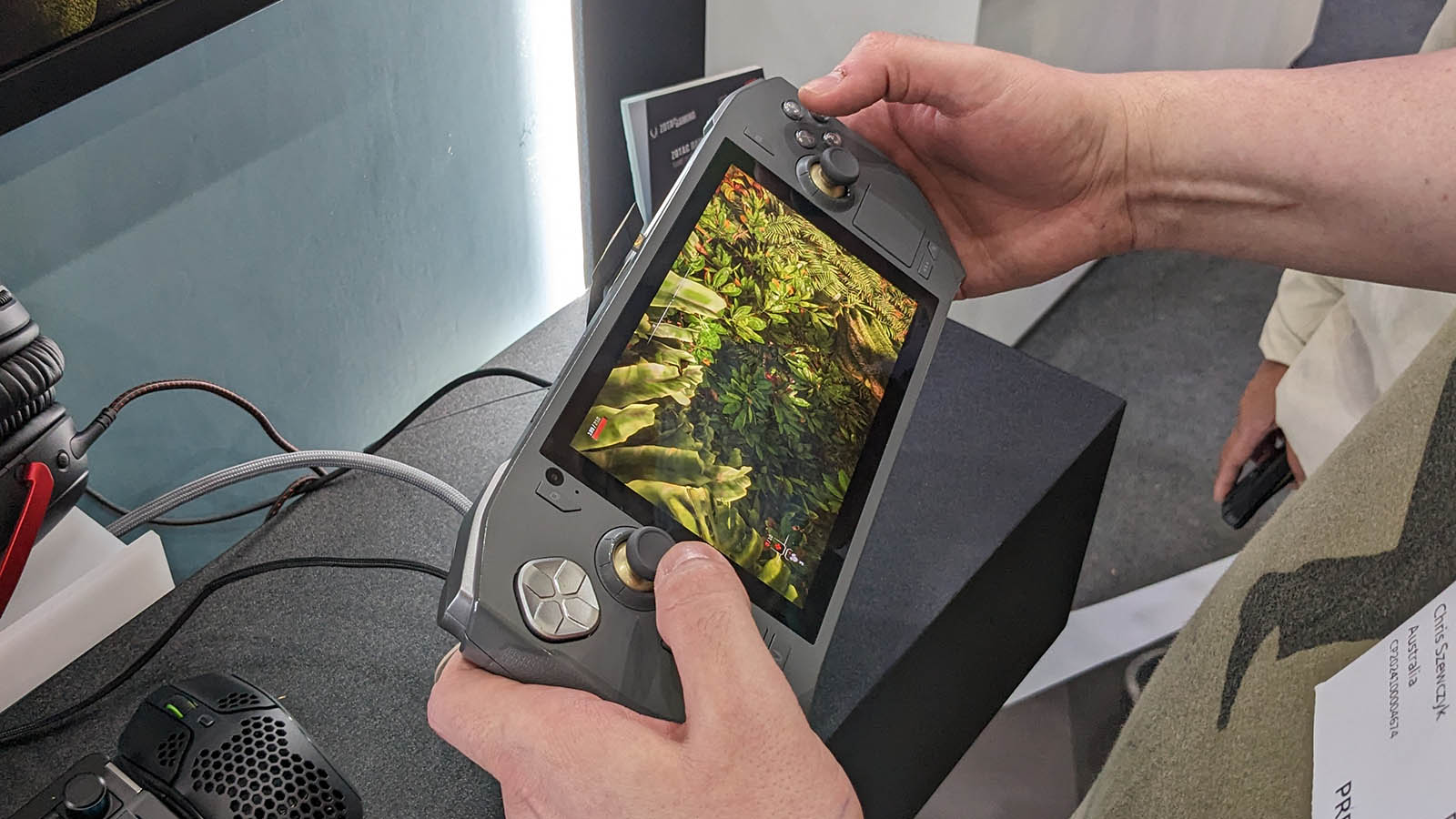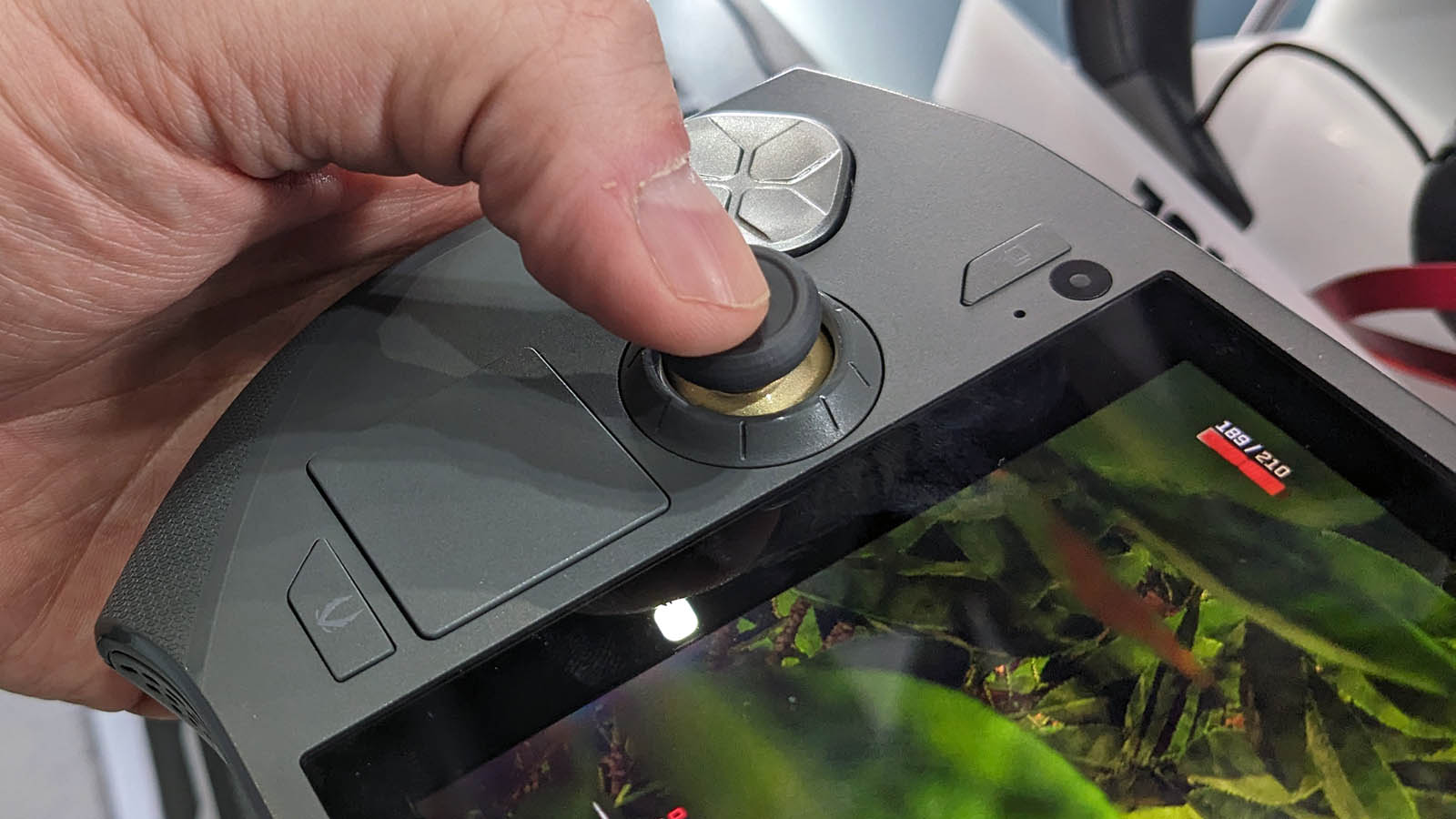
As a showcase of all things computing, Computex 2024 was a natural place for vendors to show off their new and upcoming gaming handhelds. Zotac's Zone looks to be a powerful device, though it'll have some tough competition with Asus, Adata XPG, MSI and Antec also unveiling their latest portable gaming takes.
I had a chance to have a play with the Zotac Zone, and although it is still a work in progress, the machine performed well, and it felt ok in-hand, so it's unlikely we'll see wholesale changes before it goes on sale in September at a target price of $800.
Spec wise, the Zone looks to be pretty decent, with an AMD Ryzen 7 8840U and 780M graphics taking care of the pixel-pushing duties. It'll have 16GB of LPDDR5X-7500 memory, and it supports 2280 NVMe SSDs, meaning conventional heatsink-less PC SSDs should be compatible. That's definitely nice to see.
It comes with a MicroSD slot and dual USB4 (with DP 1.4a) support, though the 48.5Wh battery is on the small side compared to the ROG Ally X's 80Wh battery.
Where the Zotac Zone really impressed was its 7-inch AMOLED 1080p touch-screen. It has a 120Hz refresh rate and up to 800 nits brightness. Though I didn't experience every handheld at Computex 2024, the Zone's screen was easily the best of those I saw. Even in a brightly lit environment, I came away really impressed with the brightness, contrast, and color reproduction of the Zone's display.

I feel that a 7-inch display and 1080p resolution is in the sweet spot for a gaming handheld. 1440p is not necessary at this size. I'll take smoother gameplay and higher FPS over greater pixel density.
The Zone comes with some interesting controls, with hall effect joysticks and 2-stage triggers and radial dials. Sadly the vertical look was inverted during my test, which left me concentrating on moving around too much to get a complete feel in the minutes I had with it. Overall, I was happy with the feel of the joysticks and triggers in my somewhat large hands.
I was a little less impressed with the finish of the unit itself. It felt a bit plasticky, but it felt rigid enough and seemed like it could take a bump or two, and there was no flex when I gave it a minor twist test. I can forgive Zotac for that, as a really premium case would no doubt add a lot more to its expected $800 price.
Zotac also showed off a selection of accessories including a docking station with HDMI, USB Type-A and Type-C support. Of course, it'll have its own carry case.
We'll have to wait and see what the final product looks like in a few months, but if visual quality is critical above all else, the Zotac Zone looks like it'll be tough to match. I like its 2280 SSD support too, but the question is, will it be able to impress enough over the much cheaper Steam Deck OLED? Let's wait and see.







